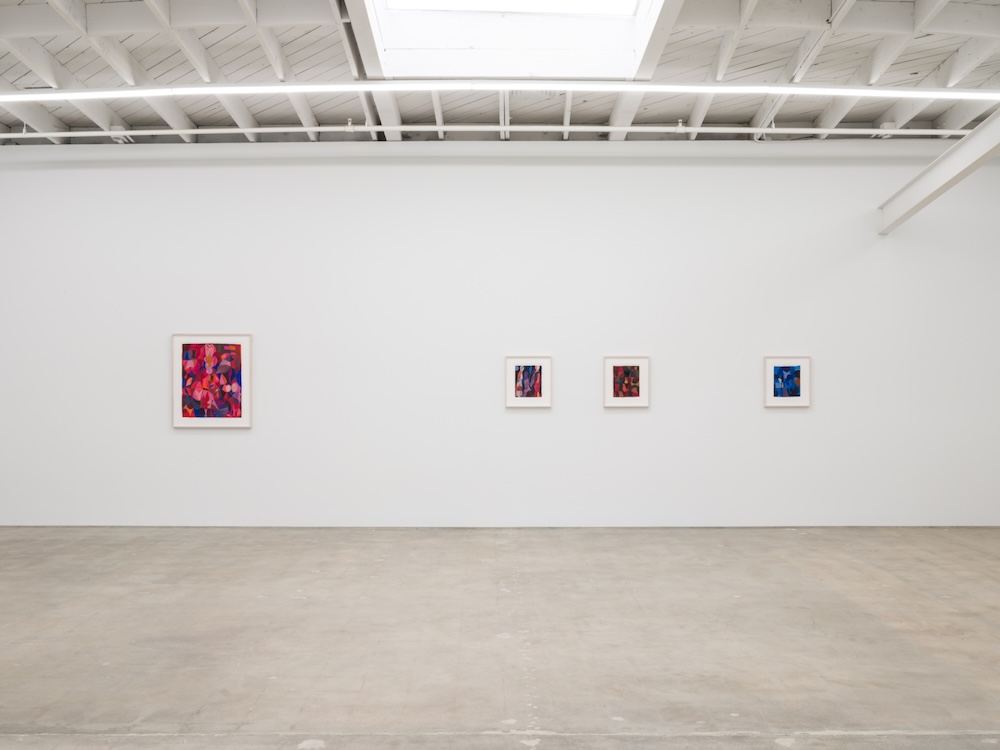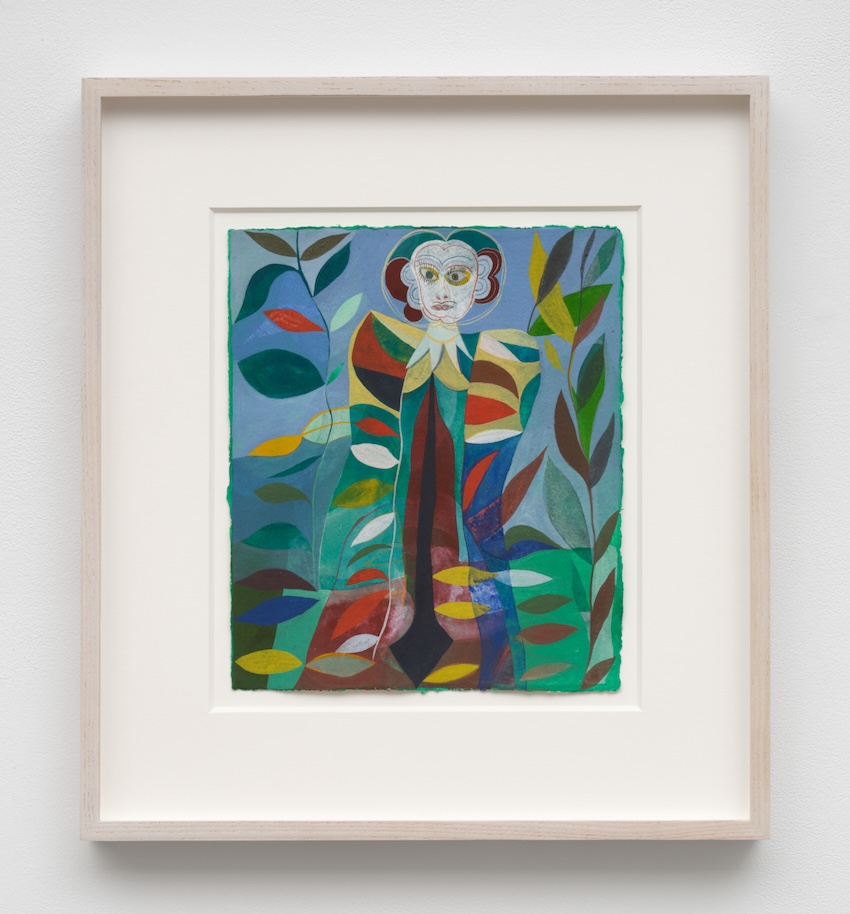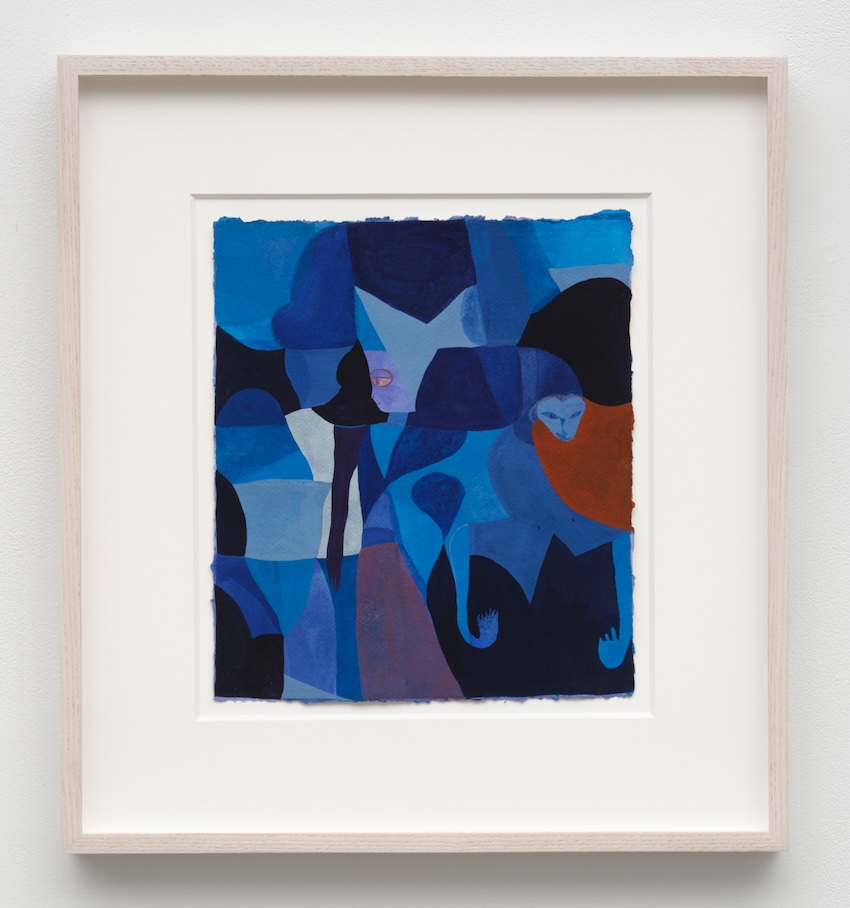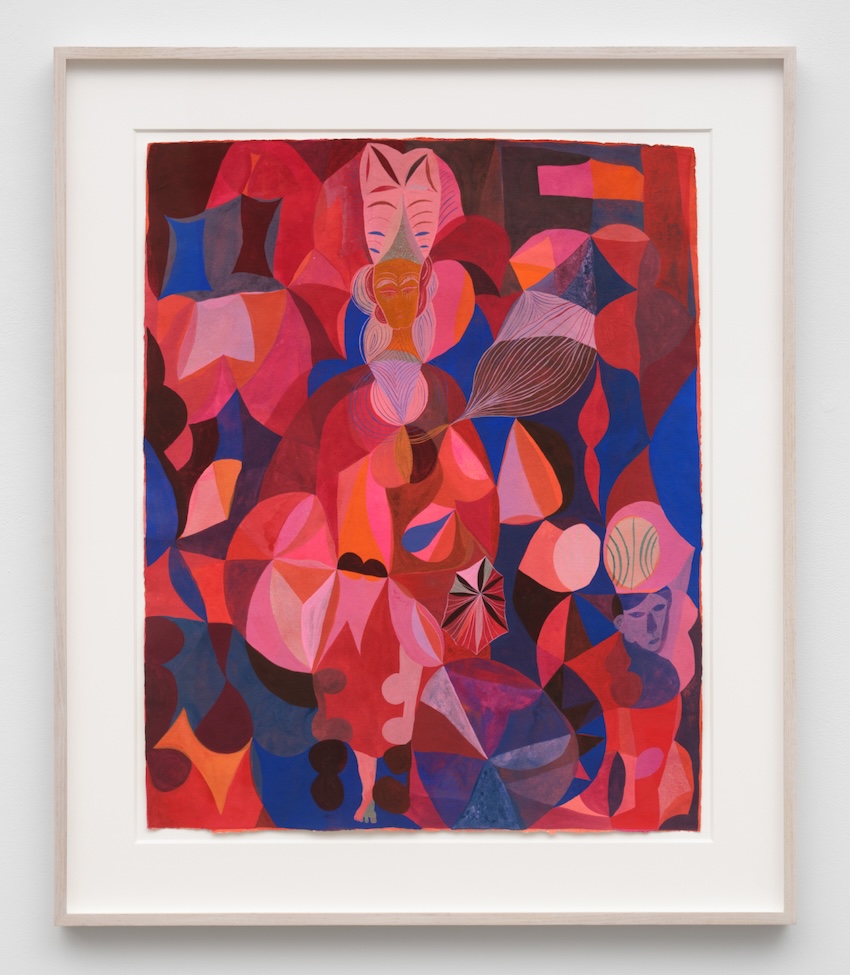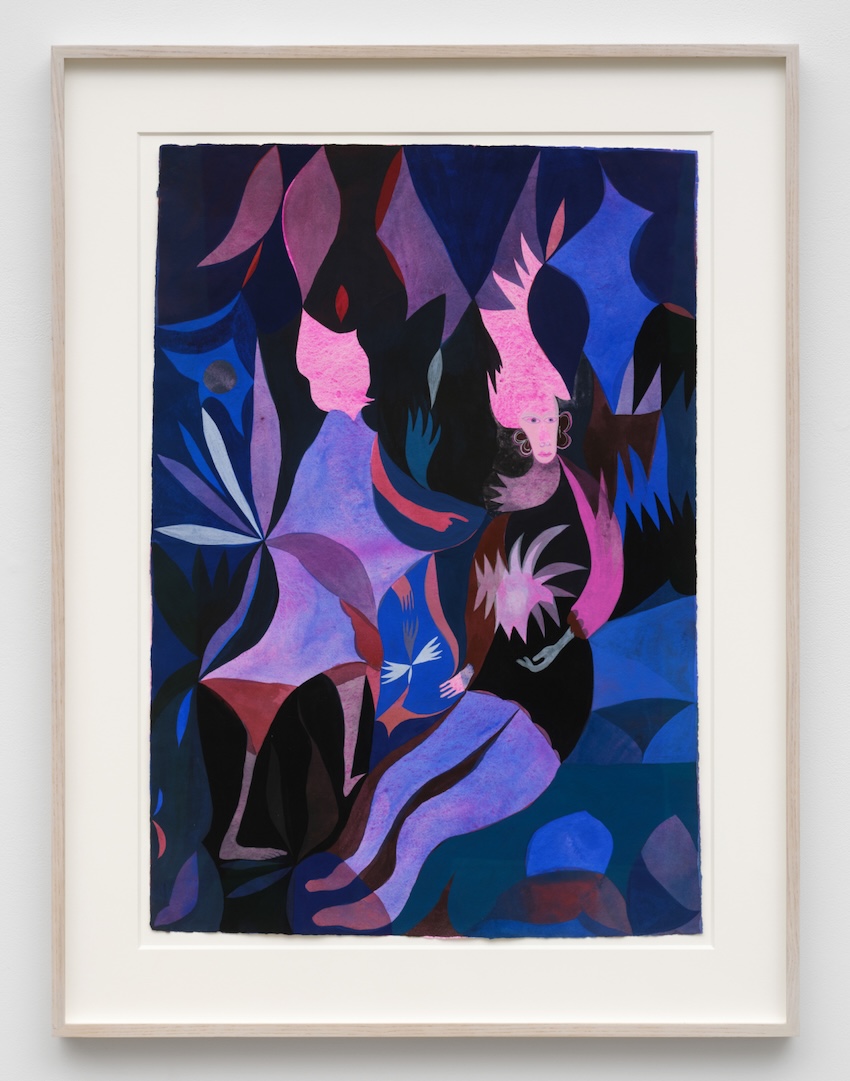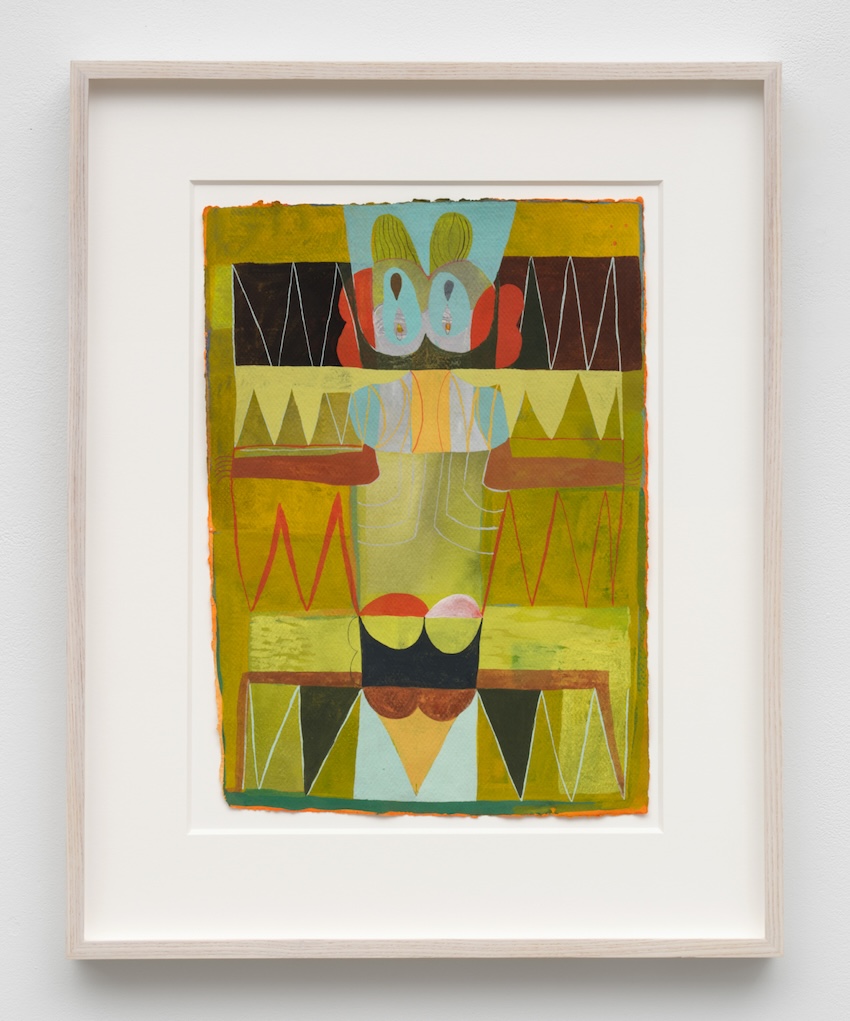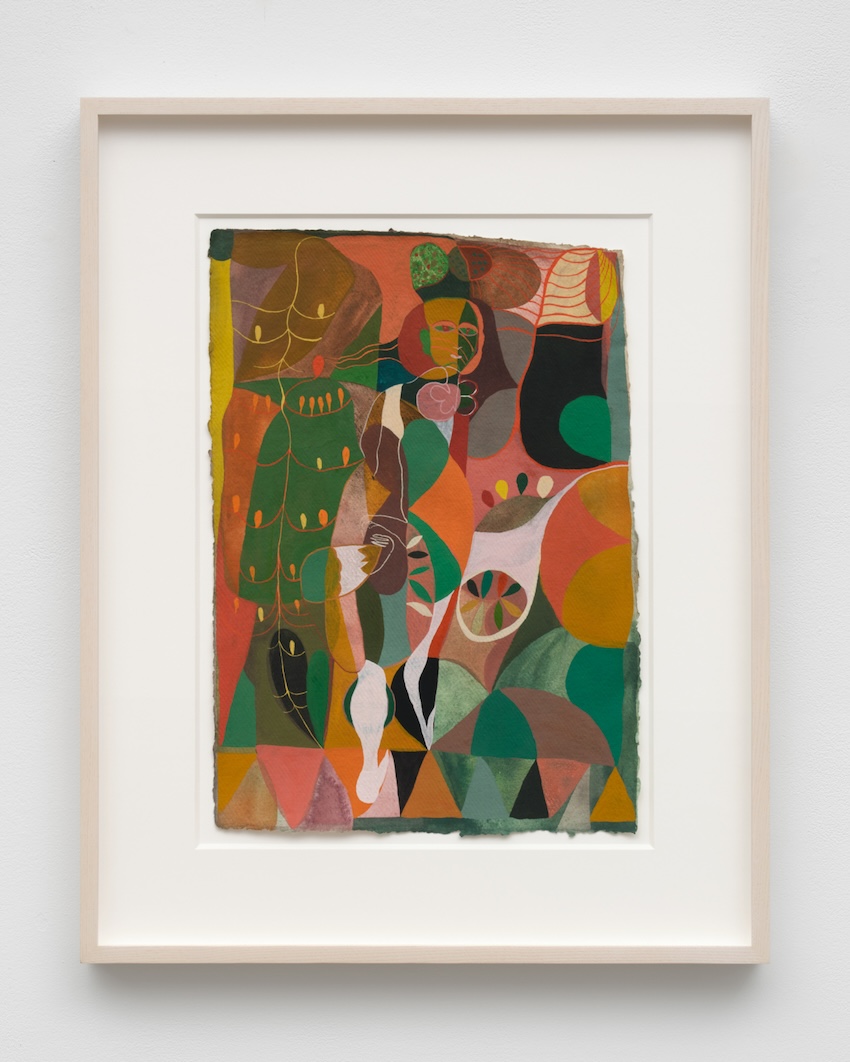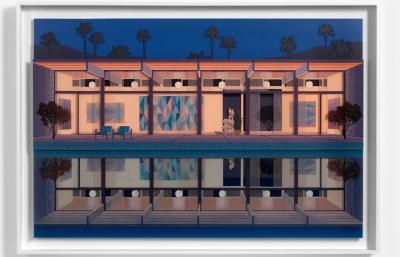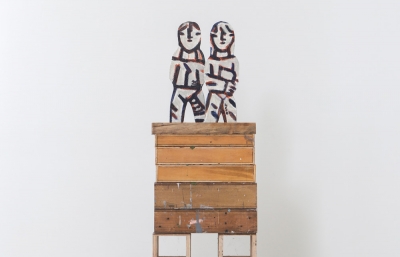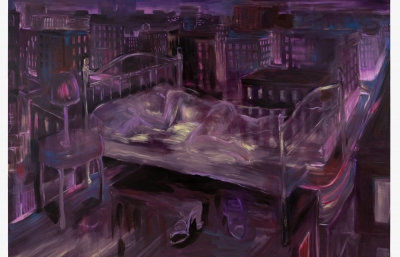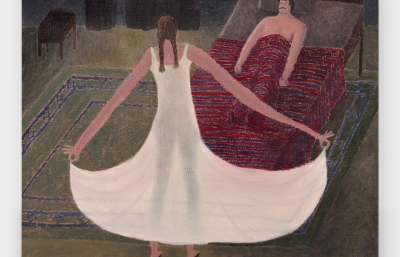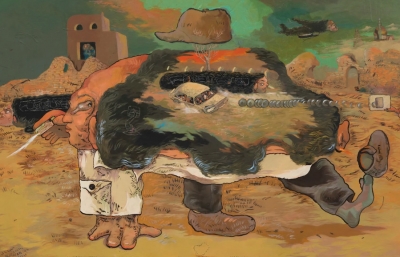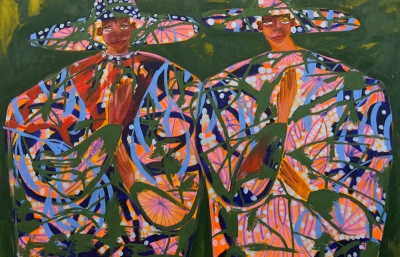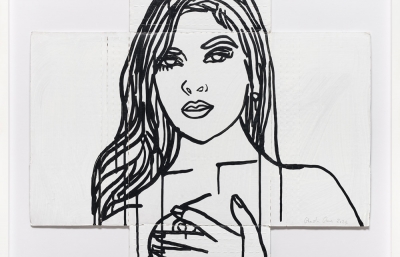Maja Ruznic describes her works on paper as “portals,” apertures inviting both the artist and the viewer into her fantastical worlds of morphing shapes, chimerical figures, and saturated color. Painted with acrylic-based gouache on raw Khadi paper, these works are an essential part of the artist’s practice: working small at the beginning of each day in the studio allows Ruznic the freedom to summon new images from her unconscious. The first exhibition dedicated solely to this vital component of her oeuvre, Srklet—titled after a Bosnian word that describes a psychological ache or discomfort—presents a selection of works on paper made this year where color and form fuse into investigations of the mystical, the emotional, and the historical.
Ruznic’s compositions delight in the slippages between the figural and the abstract. Abutting geometrical forms transform into allegorical characters, as in The Face of Western Logic (all works 2025), where a set of smoldering eyes transforms a pinwheel of colors into the disgruntled visage of logocentric thinking. The artist made Mary Magdalene, The Alchemical Feminine while researching Christian iconography to prepare for her site-responsive installation in an auditorium named for St. Francis of Assisi as part of SITE SANTE FE’s 12th International, curated by Cecilia Alemani and on view through the end of the year. In Mary Magdalene, a stately woman emerges from a morass of hot oranges and pinks like a missive sent from some matriarchal realm. Even when figures are not literally depicted, Ruznic’s proliferating forms invite pareidolia, or the tendency to perceive recognizable images in abstract visual phenomena.
As with her oil paintings, Ruznic builds her gouaches in layers. Art historian Ara Osterweil credits the “temporal density” of these works on paper to this process of accretion. For Ruznic, this density is also related to her personal history. She first began painting as a child, using watercolors her mother managed to procure while the family was living in a refugee camp after fleeing the Bosnian genocide. History, both personal and political, is never far from Ruznic’s mind. In Klimt-esque yellows, reds, and blacks, Myth Makers illustrates the process by which myths shapeshift and spread as a game of telephone: figures nestled against each other whisper to those in front of them, taking the kernel of a story and growing it into a symbolic narrative. The Numen is Not Out There, It Sits Inside of You envisions a turn away from the external world, both past and present, and toward the self. One figure points to a glowing pink chakra in the stomach of another; like shattered glass, the forms that delineate the figures overlap with and multiply outward into the protagonists’ environment. Ruznic’s gouaches are the process by which she similarly turns inward, excavating her psyche to build a new world in its image.



